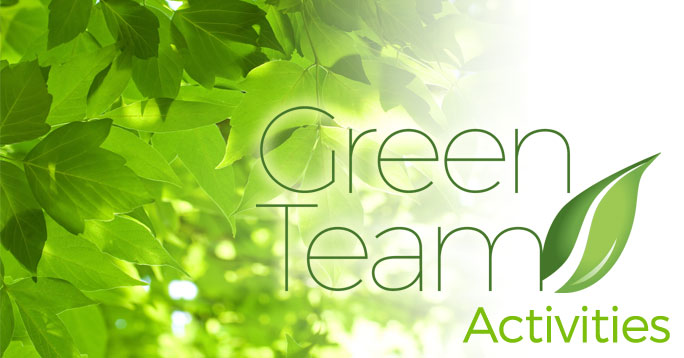
This information is excerpted from the Cornell Cooperative Extension fact sheet “Lawn Care without Pesticides.” Can home lawns be maintained without pesticides? Yes, they can, and they may even look nice too, if some very basic lawn care principles are followed. A lawn that is properly maintained will be vigorous, healthy, and much more tolerant of diseases and insects.
Proper mowing will discourage weeds and increase resistance to some pests. Proper mowing involves mowing at the correct height and frequency. Mowing height will affect the depth of the root system – the shorter the mowing height, the shallower the root system will be. A lawn with a shallow root system will be more susceptible to drought injury and less tolerant of root feeding insects and root diseases than a well-rooted lawn. Lawns mowed too short will also allow more sunlight to reach the soil. This encourages weed seed germination and weed invasion. Mow Kentucky bluegrass, perennial rye and fine fescue lawns at three to four inches. Tall fescue lawns should be mowed at four inches.
Proper mowing also means mowing at regular intervals. The rule of thumb is as follows: Never remove more than one third of the leaf tissue with each mowing. Scalping the lawn can shock it, making it more susceptible to stress. Lawn mower blades must be kept sharp. Dull mowers leave wounds on grass blades that serve as a point of entry for diseases. Leaf spot is especially encouraged by dull mower injury.
Watering Most mature cool season lawn grasses have the capability to survive extreme drought conditions by going into summer dormancy. Unless the lawn is healthy before this stressful period, summer dormancy may result in extensive injury from insects and diseases and encourage weed invasion. Remember, it is a vigorous, healthy lawn that can best resist pests. Too much water applied at the wrong time could do more harm than good. A healthy lawn will survive the summer as long as it gets one-quarter inch of rain over a three-week period, though it will be brown and dormant during this time. If the lawn receives an inch of rainfall weekly, it will continue to grow. As long as rain supplies this water, you do not need to add more. If there is not enough rain, you may water to add the remainder, for example, one-half inch of supplemental irrigation if there is only one-half inch of rainfall. The best time to water a lawn is in the early morning. Evaporation losses are low, and the leaves dry off quickly. Do not water late in the day or at night. Evening watering will increase leaf wetness and favor disease development.
Weed Management The best form of weed management is prevention. Even with the best cultural program, weeds will encroach into a lawn. The only weed management alternative to herbicides in a lawn is hand pulling. When pulling weeds, be sure to remove all of the root system since many perennial weeds will regenerate from underground parts. If you can remove weeds when you first notice them, they will be less likely to spread. A note from Nancy Caswell: Alternatively, let your lawn grow for a bit longer in the spring. Many of the “weeds” in my lawn flower in the early spring. It’s a lovely flowering meadow.
Insect Management The most common damaging insects in home lawns in New York are white grubs. Larvae (grubs) of five species of beetles in New York feed on turfgrasses. The most common grubs are those of the European chafer and the Japanese beetle. Currently, there are two biological insecticides labeled for grub management in turf.
Milky spore is a naturally occurring bacterial parasite that infects Japanese beetle grubs. It is not effective on other white grub species. Milky spore products on the market do not survive New York winters very well. They have been, at best, marginally effective here.
Beneficial nematodes are microscopic round worms that feed exclusively on ground dwelling insects, including grubs. While results with nematodes have been inconsistent, they are a viable choice for insect management on lawns. Homeowners that rely totally on biological management for white grubs may have to renovate their lawns when heavy grub infestations occur.
Disease Management
Some natural organic fertilizers and composts will suppress and sometimes prevent disease problems. Composts may contain microorganisms that are natural fighters of diseases. Diseases that have been suppressed by these products include red thread, dollar spot, and others. Examples of natural organic fertilizers with known disease suppression include Ringer (Judd Ringer Corporation), and Sustane (composted turkey litter). Composts should be applied with care, to prevent storm water from moving the nutrients off site into storm drains or surface water. Lawns should be fertilized in the fall, as most root growth and food storage occur at this time.
Core Aerification
Core aerification temporarily reduces soil compaction and thatch problems by improving air penetration and water infiltration in the soil. This encourages dense rooting of the grass plants and healthy top growth. The best time to aerate is in late summer or early fall when the weather begins to cool, the soil is slightly moist, and when weeds are less likely to sprout in the disturbed soil. Cores should be collected, and compost spread over the lawn in a way that existing grass plant crowns are buried, but compost falls down into the holes from which the cores were removed.
Fertilization
Soil fertility influences the lawn’s ability to resist pests. Soil testing is the first step in determining fertilizer requirements of a lawn. Old, established lawns may not require fertilization. Optimally, the soil pH (acidity level) should be maintained at a range of 6.0-7.0. Plant nutrients are available and beneficial microorganisms are most effective within this range. Nitrogen (N) is needed in moderate amounts for a pest resistant lawn. Leaving grass clippings on the lawn may reduce these requirements by 30 percent. Lawns should be fertilized in the fall, if indicated by a soil test, as most root growth and food storage occur at this time. An application may be made once the weather has cooled enough to minimize fertilizer burn – around Labor Day, though you may apply fertilizer effectively through October. Slow release fertilizer sources such as natural organics will provide more uniform release of nitrogen. The lawn will be green for an extended period of time, and top growth won’t be excessive.
